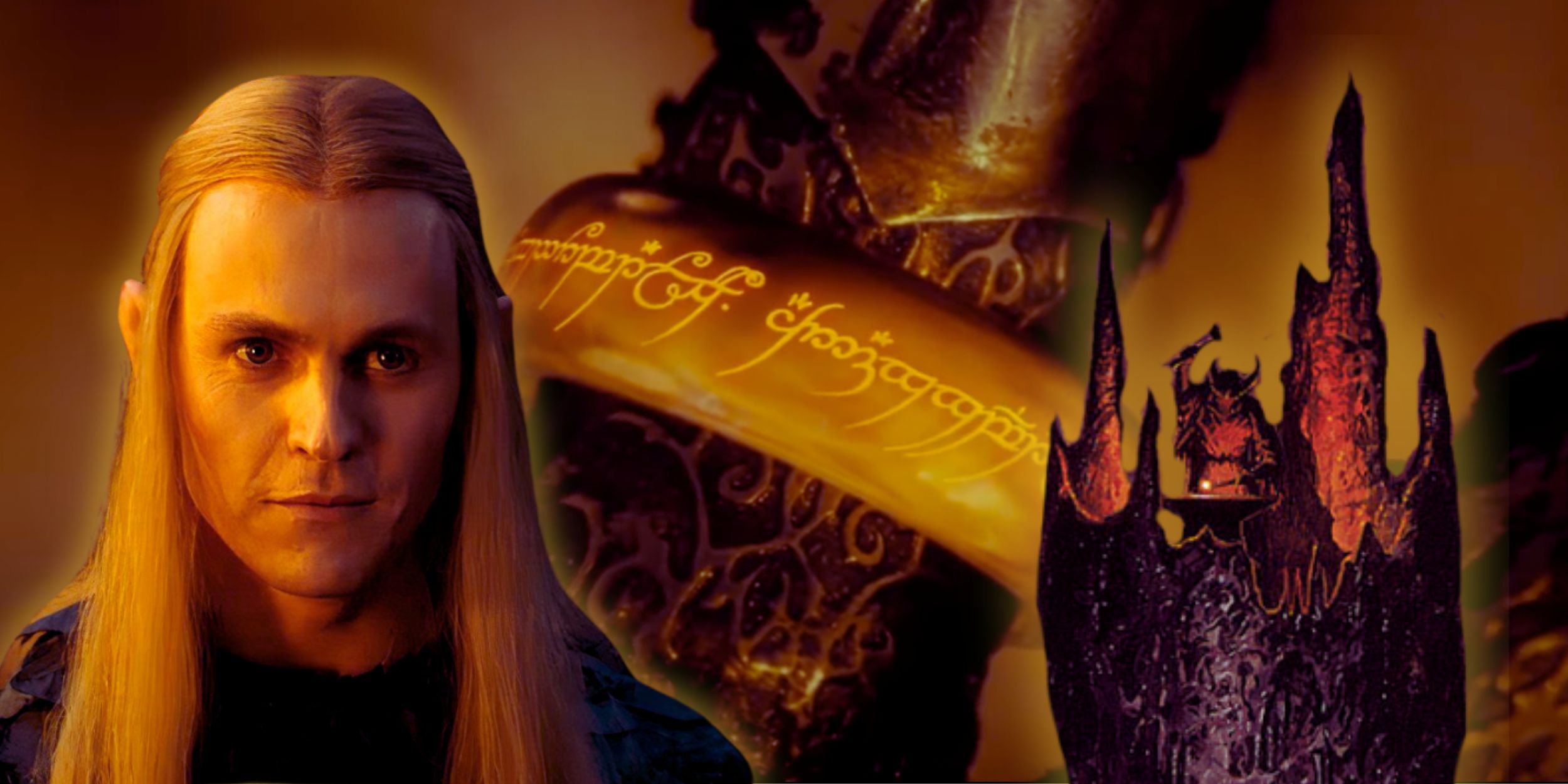Gandalf is the only Wizard who travels to the Undying Lands at the end of The Lord of the Rings, and there are particular reasons for this. One of the many scenes in The Return of the King’s ending sees Frodo leaving Middle-earth to sail across the sea, joined by Bilbo and Gandalf. The Undying Lands, also known as Valinor, are established throughout the series as being the destination for Elves leaving Middle-earth, and that raises questions about why Frodo is welcomed, as well as the others.
Gandalf is part of the Istari, a title assigned to the five Maiar who were sent to Middle-earth to assist in the conflict against Sauron. The Istari formed the Order of Wizards, with Saruman the White at the head. The others were Radagast the Brown, Gandalf the Grey, and the two Blue Wizards, believed to be named Alatar and Pallando. Details about the Blue Wizards are more foggy than the rest, primarily discussed in J.R.R. Tolkien’s Unfinished Tales in the chapter titled “The Istari.” This is also an excellent read for understanding Tolkien’s perception of the Wizards.
Istari is the plural term, while Istar refers to a singular Wizard. The same can be applied to Maiar and Maia or Valar and Vala.
Why Gandalf Goes To The Undying Lands When LOTR’s Other Wizards Don’t
Gandalf Completed His Mission By Helping Defeat Sauron
There are multiple reasons that allow Gandalf to travel to the Undying Lands when he isn’t an Elf. As a Maia, Gandalf was sent to Middle-earth with a specific purpose, and upon the destruction of the One Ring and the defeat of Sauron, he completed his mission. After completing it, he was allowed to return to Valinor. As we know from The Lord of the Rings, the other four Wizards don’t exactly contribute much to Sauron’s downfall, so they remain in Middle-earth with various fates.
Related
How Sauron Made The One Ring In The Lord Of The Rings & What It’s Made Of
The Dark Lord of Mordor’s greatest creation was deceptively simple in appearance, but the plain golden ring was also his only weakness.
Like Bilbo and Frodo, Gandalf was a Ring-bearer, carrying one of the original three Elven rings. This detail is primarily left out of Peter Jackson’s movie trilogy, but his ring can be seen in the Grey Havens scene. If he were mortal, this would have allowed him to travel to Valinor regardless of his being a Maia, as was the case for Bilbo, Frodo, and Samwise Gamgee later on.
Saruman Meets A More Tragic Fate After His Choices In The Lord Of The Rings
Saruman’s Spirit Lingers In Middle-earth
Saruman’s fate in the films and the novels are quite different. In the extended edition of The Return of the King, Saruman is shown being stabbed in the back by Gríma Wormtongue atop the tower of Orthanc at Isengard. In the novels, the Fellowship and Théoden meet with Saruman in The Two Towers, following Helm’s Deep, in a chapter titled “The Voice of Saruman.” In this chapter, Gandalf gives Saruman the opportunity to repent for his decisions, but he refuses. Gandalf then breaks Saruman’s staff and expels him from the Order of Wizards.
His spirit is rejected from Valinor and forced to wander powerless in Middle-earth, similar to Sauron.
In The Return of the King, after the One Ring is destroyed, Saruman travels to The Shire with Gríma and a group of ruffians to cause terror in spite of the Hobbits. After Frodo and the other Hobbits reclaim Hobbiton from him, Gríma stabs Saruman in the back. Since he is a Maia, Saruman’s body is destroyed, but his soul remains. Unlike Gandalf, who was sent back with a new body after dying in his fight against the Balrog, Saruman isn’t given another chance. His spirit is rejected from Valinor and forced to wander powerless in Middle-earth, similar to Sauron.
Tolkien Doesn’t Reveal The Fates Of The Other Wizards, But They Likely Remained In Middle-earth
Radagast & The Blue Wizards Remain Behind
Gandalf leaves for Valinor, and Saruman remains in Middle-earth, but there are still three more Wizards unaccounted for. Tolkien was rather vague about the fate of the other three, but there are some compelling pieces of information for readers to speculate about. Part of the enduring allure of Tolkien’s lore, in my mind, is that some matters are left mysterious. There are questions that will never be answered, and Tolkien’s letters often suggest that he might not have been entirely sure. Still, the info we do have is worth exploring.

Related
Lord Of The Rings: How Gandalf The Grey & White Are Different
The difference between Gandalf the Grey and Gandalf the White goes beyond a wardrobe change. Here’s how the wizard transformed in Lord of the Rings.
Radagast the Brown aided Gandalf during the Quest of Erebor but proceeded not to take part in the War of the Ring outside of sending the eagle Gwaihir to rescue Gandalf from Orthanc. His fate isn’t specified, but it’s presumed that his fascination with the nature and creatures of Middle-earth only increased, causing him to remain there. The Blue Wizards are much more vague even still, with Tolkien’s only thoughts about their whereabouts in The Lord of the Rings being that they may have gone East, potentially succumbing to some form of evil and never returning to Valinor.




